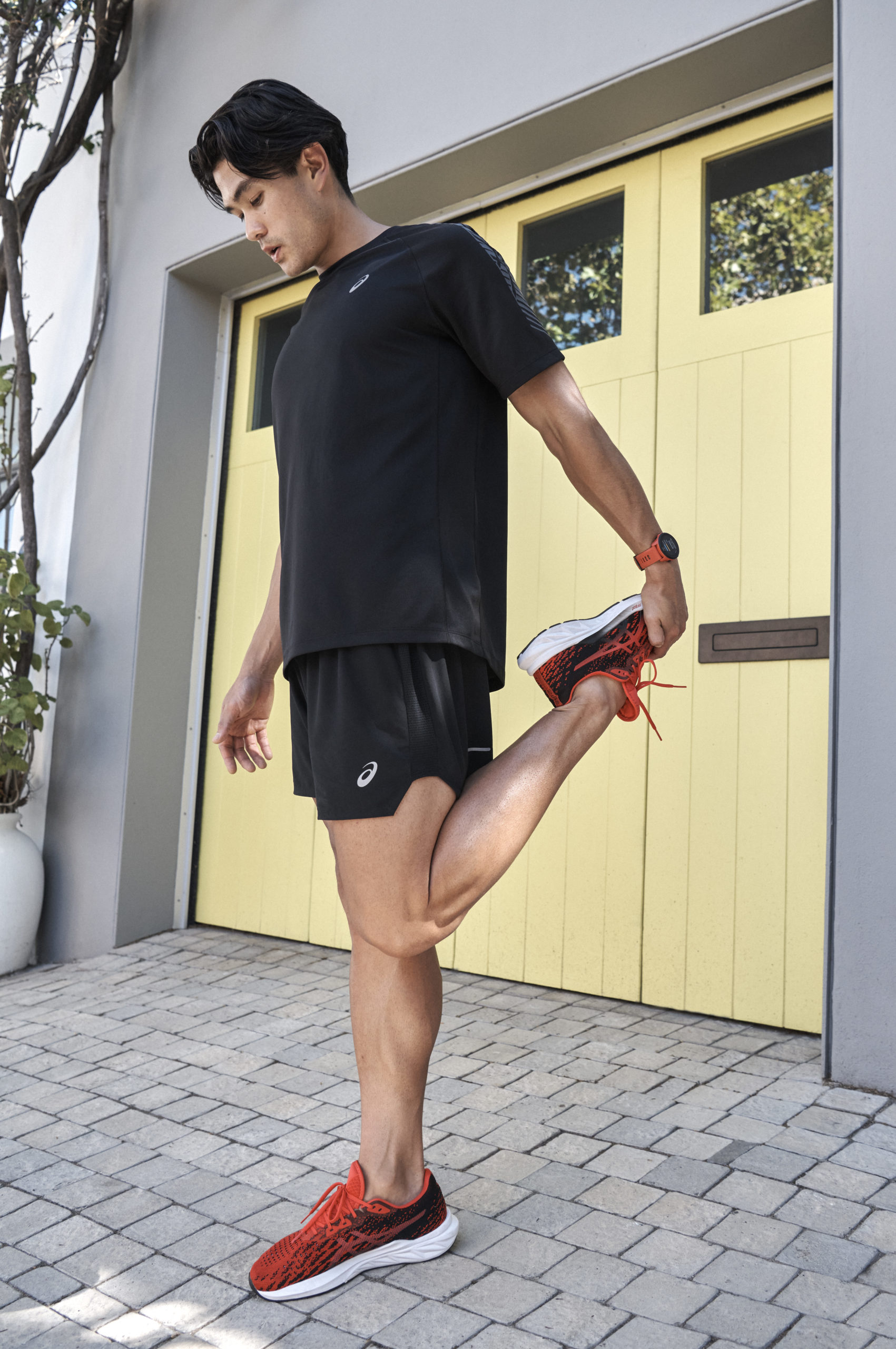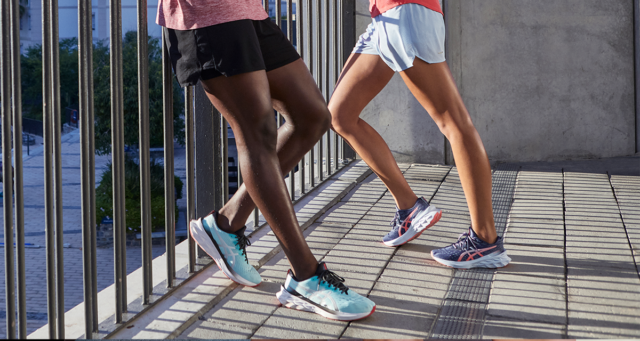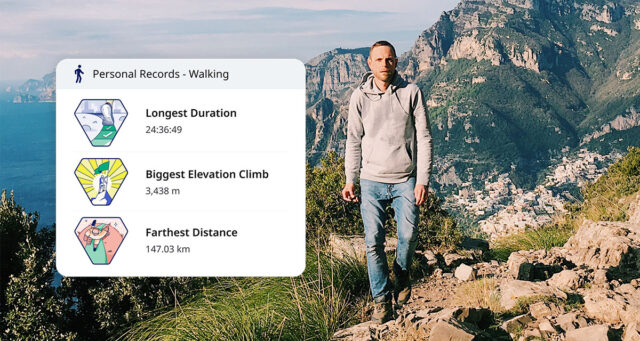Aches and pains are not desirable but they happen to runners. Aches and pains of some sort happen, whether it is workout fatigue, soreness, or an injury. How do you distinguish between discomfort and pain? How do you treat those aches and pains? This guide will help you learn how to deal with aches and pains in running so that most of your runs can be pain-free.
Discomfort vs. pain
Generally, discomfort is generalized and bilateral; an example of this is both quads being sore at the end of a long run. Discomfort does not alter your gait (you may shuffle, but not drastically alter).
Discomfort includes fatigue during a workout, soreness from a previous workout, and burning (from hydrogen ions released as a byproduct of lactate). You will not risk serious injury by running through the discomfort. Discomfort is a normal and necessary part of the training process.
However, you do not want to run through pain. It is often localized and one-sided. Pain is intense enough to alter your gait while running. Pain may be a sharp pinch, throb, a localized dull ache, or similar sensation – it hurts! Pain indicates a potential injury, so you do not want to run through it. Cut the run short and take time off if you experience pain.
Read more: At-home recovery essentials for runners
The “three days off rule”
Did something hurt when you ran? If the pain was enough to stop your run, be smart and take three days off. Do not attempt to test it.
If the pain fails the hop test after three days, consult with your doctor about imaging. Bone stress injuries do not heal quickly, so the pain will be present even after three days off. Do not run until you receive proper imaging.
If the pain is due to a strain, three days off will allow the injury to start healing and reduce further damage. The acute inflammation will begin to subside in three days. Then, you can safely resume a small amount of easy running, so long as running does not hurt. (If your injury hurts to run through, stop running but keep cross-training – researchers suggest that pain-free cardiovascular activity increases blood flow to the injured muscles, thus promoting healing.)
Different types of running pain
Running pain can come in four types: joint pain, muscle pain, tendon pain, and bone pain.
While only imaging can diagnose a bone stress injury, you use the hop test at home to assess if you need to see an orthopedist. The hop test is simple: hop on the affected leg (your other leg should be off the ground). If the injury hurts, it may possibly be a stress fracture; stop running and consult your doctor for imaging.
Joint pain
Joint pain will often be localized to a particular joint, such as the knee. However, tendons attach to joints, you may also have a muscle injury. When in doubt, it is best to see a physical therapist or orthopedist for proper diagnosis.
Muscle pain
Muscle pain is one of the most common types of aches and pains for runners. Muscle pain can vary from soreness to strains to more serious muscle tears. There are a lot of misconceptions around soreness and honestly, a fundamental misunderstanding of what it is and why it happens. Read more on how to manage soreness from running.
Tendon pain
Finally, there is tendon pain. The most common tendon injury is a sprain, such as a sprained Achilles tendon. However, running through a sprain can lead to a rupture of the tendon, which is more severe and will require a longer rehabilitation period.
Common running injuries
Knee pain

Common types of knee pain include Runner’s Knee (pain under the center of the kneecap) and Iliotibial band (better or better known as IT band) syndrome, which manifests as lateral knee pain.
Knee pain can often occur due to muscular weakness in the hips and glutes. For example, IT band syndrome causes knee pain, but the root source is weak glute muscles. Since those glute muscles do not do enough work, other muscles (such as the tensor fasciae latae, which the IT band connects to) do too much work and become tight as a result. The tight muscles then pull on the IT band, which then hurts.
Shin pain
Shin splints are prevalent, particularly amongst new runners. The formal name of shin splints is medial tibial stress syndrome, meaning that they are overuse injuries. Shin splints can occur for two reasons: inappropriate shoes and too rapid of an increase in mileage. To prevent shin splints, gradually increase your mileage (especially if a new runner), and be sure to wear shoes that are specifically designed for running and feel comfortable for you. Read more on how to manage the pain from shin splints.
Calf pain
Tendons, bones, and muscles can all be culprits for calf pain.
- Achilles tendon dysfunction: The Achilles tendon is responsible for plantar flexion of the ankle. Common injuries include inflammation or, in more severe cases, rupture. If you are prone to Achilles tendon pain, you want to avoid footwear with a low heel-to-toe drop (both running shoes and shoes such as flip flops).
- Calf strain: The gastrocnemius is the large muscle in your calf. Due to its eccentric function in the running stride and high composition of fast-twitch muscle fibers, it is one of the most commonly strained muscles in the body.
- Calf cramps: While not an injury, both calves can experience cramps if you are dehydrated.
- Tibial stress fracture: Like other bones, the tibia bears a significant amount of stress when running. Stress reactions (pre-fractures) and stress fractures of the tibia are common, so always approach calf pain with caution.
Glute pain
- Piriformis syndrome: The piriformis is a small muscle in the buttocks – that happens to sit right on top of the sciatic nerve. When it becomes overactive, it can press on the sciatic nerve and cause buttock and leg pain.
- Muscle strain: While not as common as a hamstring or calf strain, you can strain your glute muscles.
- SI joint pain: The SI joint connects your pelvis to your spine. Sometimes, this joint can become inflamed or dysfunctional, causing pain in your low back and butt.
Hamstring/quad pain
- Strains: Both muscles of the thigh are prone to muscle strains. It is important to rest when you strain a muscle; running through the pain can increase the risk of muscle tearing. Hamstring strains are common in runners, usually caused by overstriding or sprinting too hard when the muscles aren’t warmed up. With time and patience, the hamstring strain should begin to heal. Remember, if pain persists or worsens, see a doctor. Learn more about hamstring strains here.
- Femoral stress fracture: Unlike a strain, stress fractures generally produce more localized pain. If it hurts to hop, do not run and consult a medical professional immediately!
Foot pain
- Sprain: While we often think about sprains of the ankle, you can sprain one of the many tendons in your foot. he most common type of ankle sprain is an inversion sprain, when the foot rolls inward and the ankle rolls outward. This can result in a sprain of one of the ligaments on the outside of the ankle. How bad is it? That depends. Read more on how to treat a mild sprained ankle.
- Bone stress injury: There are twenty-six bones in the foot – and each of them bears a large amount of repetitive stress when running!
Source: Physio Pedia – Muscle Strain
Please note: This blog is not intended to be a substitute for professional medical advice, diagnosis, or treatment. Always seek the advice of your physician or other qualified health provider with any questions you may have regarding a medical condition.





